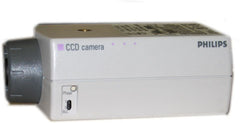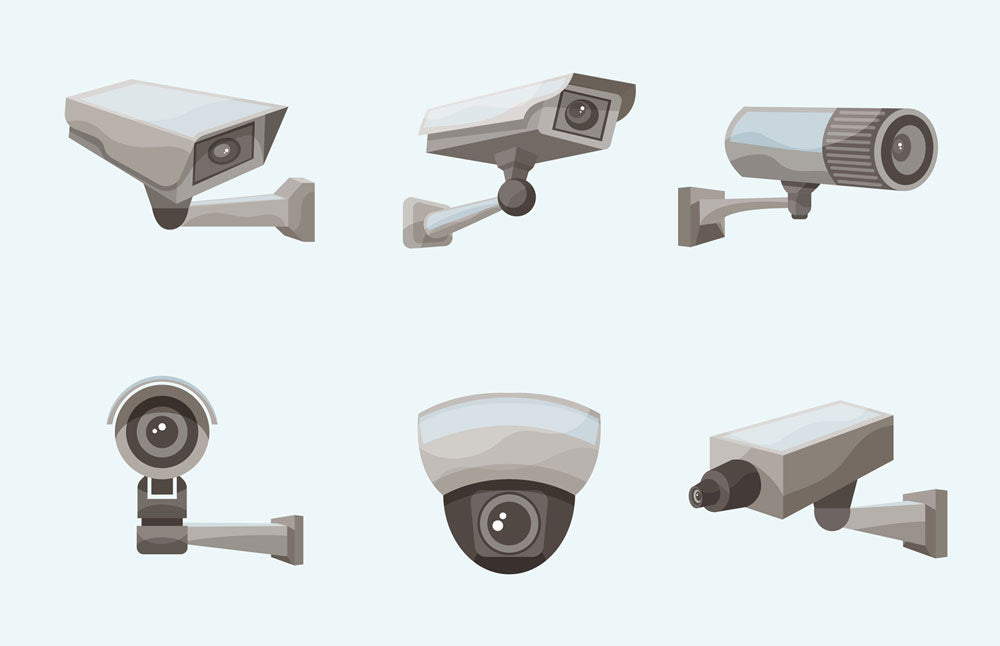Oftentimes after making a large or expensive purchase, we tend to think of those products as being state of the art even after they become obsolete. We see this in camera systems quite a lot - when you look at your surveillance system and see that your cameras are still working and the NVR is still recording it can be hard to see a reason to change it. It is only when you see how much the industry has evolved that it becomes apparent how poorly your cameras look compared to the newest offerings.
A quick history into cameras systems will give you an approximate time frame into the age of your system and where it sits compared to the newer technologies. This timeline shows some of the milestones of the technology changes in the CCTV surveillance industries based mostly on when we started selling them (i.e. some of these technologies may have existed before these years)


I will go ahead and assume that no one is still using timelapse VCRs with T-120 or T-160 tapes anymore but for a long time these where the main way security camera video footage was stored. It was able use a 120 minute tape such as the T-120 and along with time lapse technology to save more time but less frames per second resulting in days or even weeks of recordings on a single tape. The downside of this technology is that footage was not saved in real time so people or events would appear to jump through time. The other problem with VCRs was that they typically recorded just 1 camera; there was exceptions to this such as a quad splitter that allowed you to record 4 cameras but they would reduce your cameras to ¼ of their original video resolution to make them all fit on 1 screen or a multiplexor which recorded multiple cameras by recording 1 frame from each camera in a sequence then only playing the frames for the camera you selected during playback. You could also just buy more time lapse VCRs and have one for each camera but, even back in the 80’s, these were expensive – each VCR was around $700 and you also needed a monitor for each one so you could watch them.

Our most popular monitor back then was a VM-901B 9” B&W monitor which cost around $300 each. The main cameras during this time were called box cameras and they didn’t include a lens or wall mount – a fully setup camera with a good quality lens and outdoor camera enclosure would be nearly another $900. So where am I going with all of this? Camera systems were very expensive, actually far more expensive than they are now. A single camera, lens, mount, VCR, and monitor was about $1900 total in the mid 80’s, if you adjust for inflation that is $5,300 in 2022 money. So imagine you purchased several of these to cover your business, the initial expense was so high that you wouldn’t be in a rush to replace it and the products would work for well over 10 years in most cases.


By the early 2000’s we were selling computer-based digital video recorders (DVRs) that incorporated hardware encoder cards connected to the motherboard’s PCI slots. At the time this was cutting edge, you could record 4-8 cameras per card and use multiple cards. The computer also displayed all of the cameras on a single monitor while still recording each camera individually at typically either CIF or 4CIF (360x240 or 704x480, respectively) resolution. You paid a lot more for this type of recorder than you would a VCR but it was more robust and saved you from buying t-120 tapes and extra monitors. Another bonus was that it didn’t require someone to change out the VCR tapes every morning which was the norm with timelapse systems. Cameras were also being produced with an integrated lens and simple wall arm mounts which brought their cost down, so this when we started seeing people commonly install 8 or more cameras at a single location.

From this point forward the technology continued to improve in a kind of snowball effect. Cameras started having higher resolutions, became smaller, and improved their hardware. These analog cameras, sometimes now referred to as CBVS, came in a range of qualities where the low end was in the 300 lines of resolution using CMOS chips to the high end using the Sony 960H CCD chips with 960x480 resolution. The 960H chipset was one of the best for years until eventually HD-SDi was introduced to surveillance industry. HD-SDi was an adapted broadcast, all-digital protocol and it allowed us to offer 720p and 1080p cameras. We still have some of these systems in service to this day because the image quality is still pretty good even by today’s standards (also keep in mind that we still have customers using CBVS but I feel that those systems do not offer enough detail in their recordings to be that useful anymore). IP cameras were coming down in price as well, though still double the price of a HD-SDi cameras, but they were more approachable as a viable security option.

We originally carried Vivotek IP cameras at this time and integrated them to computer-based servers running specialized NVR software that supported many different brands. During this time it was still difficult to integrate IP cameras from different manufacturers because they all had proprietary software and video formats. A coalition of manufacturers had created ONVIF in 2008 with the goal of making these different brands gain interoperability with each other and in 2011 they released the first profile known as ONVIF-S. This helped many cameras at least have some functionality on third party NVRs but it was far from perfect with many advanced features not being supported through the protocol. That has improved over time but to this day ONVIF is still more of a temporary patch to make thing work together compared to using the same brand cameras and NVRs.
Fast forward a few years and we see resolutions better than 1080p become common. First we had 3MP (Megapixel) and in less than a year that jumped to 4MP followed quickly by 5MP, 6MP, and 8MP cameras. The resolution jumps in the beginning were done using CMOS chips that could barely handle the high-end resolutions so the low light quality suffered in direct proportion to increased resolution. There was a few years where 4MP was considered the best of both worlds offering good resolution in terms of pixel per inch (PPI) and acceptable low light performance.

In 2018 that all changed when we began offering Chroma cameras, these cameras operated day and night in full color – this was a revolution in the commercial surveillance industry. These camera’s low light performance was so good that you could see more in the camera than you could with you own eyes. We also began to see cameras offering smart functions such as human and vehicle detection so you could get more accurate alerts. Before this, the camera could only be setup to send alerts if it detected motion but motion itself is too vague and could be triggered with shadows, plants, small animals, or anything that caused a change in the image. Cameras can now count how many people passed through a door, detect and capture faces, record license plate information into a searchable database, automatically follow movement, and they continue to add new functions all the time. So here we sit, cameras are more capable and more affordable than ever but because there is so many options its hard to determine which is the best fit for your particular needs.
Currently you have so many choices on resolution, features, styles, and prices that it can be pretty overwhelming. There is everything from super inexpensive indoor cameras to prohibitively expensive specialty cameras that run in the thousands and, to make matters worse, the lines between product lines has become continually blurred. The evolving of technology is amazing but, the pendulum swings back and forth, a new technology will come out on a higher end camera series that is very successful and then because of this success the manufacturer tries to implement that feature on cheaper model that need to have lower end components to hit a price point so, in a sense, we are seeing an evolution and followed by a devolution for the sake of price. This duality can make it incredibly confusing to understand the difference, which is why you want to partner yourself with a distributor that truly understands what they are selling.


